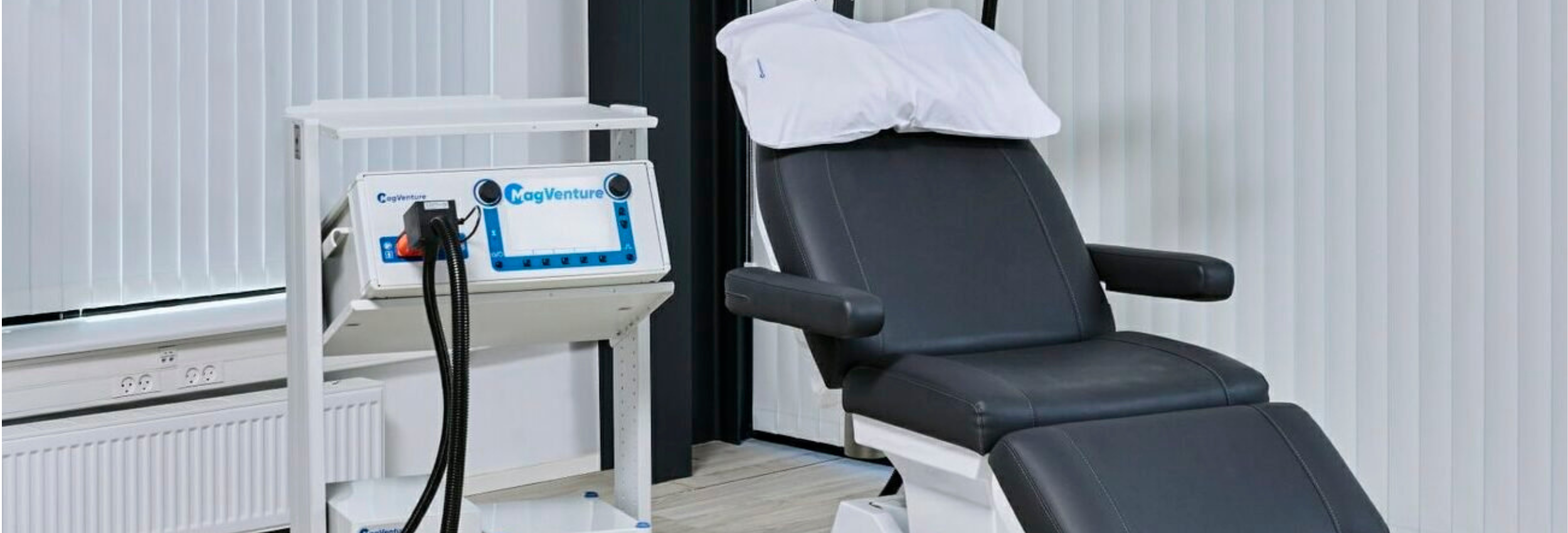
ABOUT
TMS Restoration Psychiatry is dedicated to offering all patients one of the most advanced options for treating Major Depressive Disorder, Postpartum Depression, anxiety disorders including OCD, PTSD, General Anxiety Disorder and other mood disorders. Our TMS Specialists provide a safe, non-invasive and effective outpatient procedure that has helped thousands of patients who have not responded well to medication treatment.
Please note that we have 5 treatment machines in our three offices.
Our Mission:
The mission of TMS Restoration Psychiatry is to restore hope and improve people’s lives by providing specialized patient treatments for people suffering from clinical depression and similar debilitating disorders. Our TMS care team provides compassionate care and excellence in treatment, always putting the needs of our patients first. We advocate for the highest standards of patient care, ethics and respect. The dedicated doctors, technicians, and office staff at TMS Restoration Psychiatry work to offer patients the highest level of TMS treatment services available.
TMS is Non-Invasive
TMS is non-invasive, meaning that it does not involve any anesthesia or sedation, as the patient remains awake and alert during the treatment. Side effects frequently experienced from antidepressant medications (i.e. weight gain, sexual dysfunction, tiredness, etc) do not occur with TMS therapy. There is no recovery time either, so patients can drive home afterwards and resume their daily activities.
TMS is Effective
FDA clinical trials show 2 out of every 3 patients reported remission or a significant reduction in depression and anxious depression (anxiety) symptoms after completion of TMS Therapy. Subsequent studies have consistently shown at least 3 out of every 4 patients positively responding to TMS Therapy.
Transcranial Magnetic Stimulation (TMS) is a technological breakthrough in the treatment of Major Depressive Disorder (MDD) which provides relief for patients who have tried medication, traditional therapy, and other alternative methods with little to no results. It is an FDA-approved, non-invasive treatment that has been recognized by the American Psychiatric Association in its ‘Best Practices Guidelines’ as an effective treatment for major depression.
TMS is a safe and effective outpatient treatment for anyone who is experiencing difficulty finding relief from their depression and anxiety symptoms. For those who have tried multiple depression medications, struggled to “click” with a therapist, or haven’t found something that resonates with them when it comes to overcoming depression, TMS offers solutions. TMS is an extraordinary treatment option for individuals who have not experienced satisfactory improvement from antidepressant medication or other treatments.
Watch these videos to learn more!
TMS works by doing the following:
Stimulating neural activity in the dorsolateral prefrontal cortex through magnetic coils
“Strengthening” the part of the brain responsible for managing depressive symptoms
Allowing the patient minimum discomfort, short treatments, and lower risk than most depression medication
Giving patients the power to schedule their treatments without the worry of anesthesia use
Stronger neurons can lead to reduced depression symptoms. TMS works by stimulating the neurons in the area of the brain that depression impacts the most.
TMS Timeline
-

Week 1
MAPPING
Determine patients MT, map the prefrontal region of the brain, start receiving treatment.
-

Weeks 3-4
TREATMENT
Patients receive treatment in the left side of the brain in 20-minute intervals.
-

Weeks 6-8
TAPER
Treatment is set to taper as the patient completes treatment.
-

Post Treatment
RESULT
Patients experience improvement, remission, or may continue treatment.
Treatment lasts between 6-8 weeks. We work with patients to figure out the best schedule to fit their busy lives, and we understand that flexibility is an important part of patient comfort during treatment.
Our psychiatrists and technicians work to find the best resting position for your treatment. We start by mapping the brain, determining with precise measurements the best site for treatment. Next, we determine your Motor Threshold. This percentage tells us how much stimulation you will need. The mapping process takes between 15-20 minutes, and it’s easy and painless for the patient. The chair is easily adjustable, allowing you to relax while we administer the treatment so you’re able to read, watch TV, or just take a moment for yourself.



